
The history of Caladium
If you have landed on this site, it is because you already know my very pronounced addiction to Caladiums!
I have a real fascination with these pretty variegated leaves and to make matters worse, the varieties are so numerous that you immediately want to start collecting them…
At the start of my collection, it was a real mission to obtain them in France and the frustration was all the greater seeing our American neighbors and their fields of caladiums in Florida or the diversity of colors and patterns of the Thais. .
When we think that the discovery and commercialization of caladium was originally a French story, there is reason to be angry!
The history of Caladium is also fascinating and very little known. During my research, here is what I was able to find and which I would like to share with you:
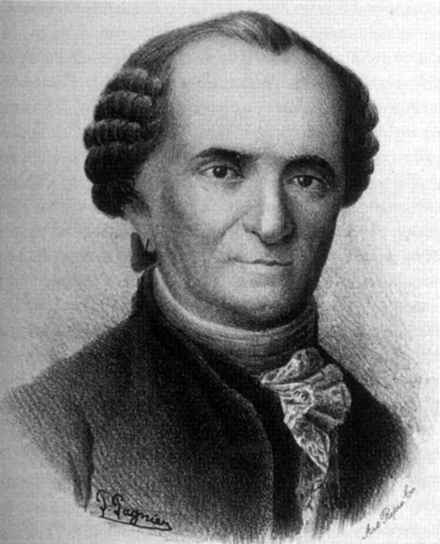
It all started in 1767, with Philibert Commerson (portrait above). French doctor and naturalist, he is passionate about botany, it is even said that this man was so devoured by this passion that in his youth he did not hesitate to pilfer plants and fruits from the Montpellier plant garden, where he studied, at so much so that his botany teacher forbade him access to it.
In 1766, Louis Antoine de Bougainville, commissioned by King Louis XV for a world tour, invited Commerson to join the expedition.
He boarded the ship Étoile and arrived in Rio de Janeiro in May 1767.
During this South American stopover he discovered, collected and herbariumed no less than 1800 plant species including our famous Caladium classified at the time in the Arum family.
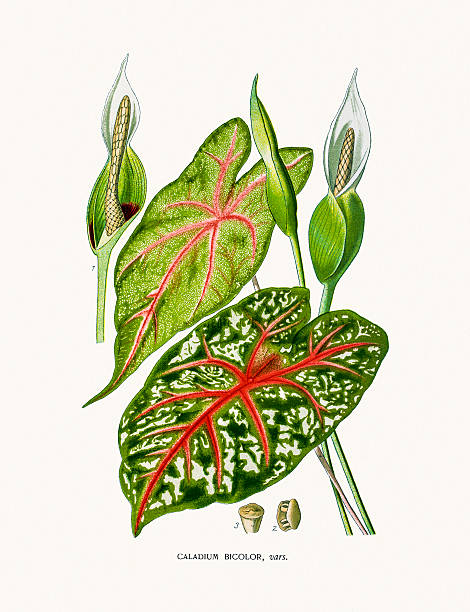
In 1785, Emile Paul Ventenat, then a professor at the Paris Plant Garden, studied this plant and found it completely different from Arum , he reclassified it as Caladium . Its name comes from the Greek “ kalos ” which means “beautiful”, which is certainly due to its magnificent foliage.
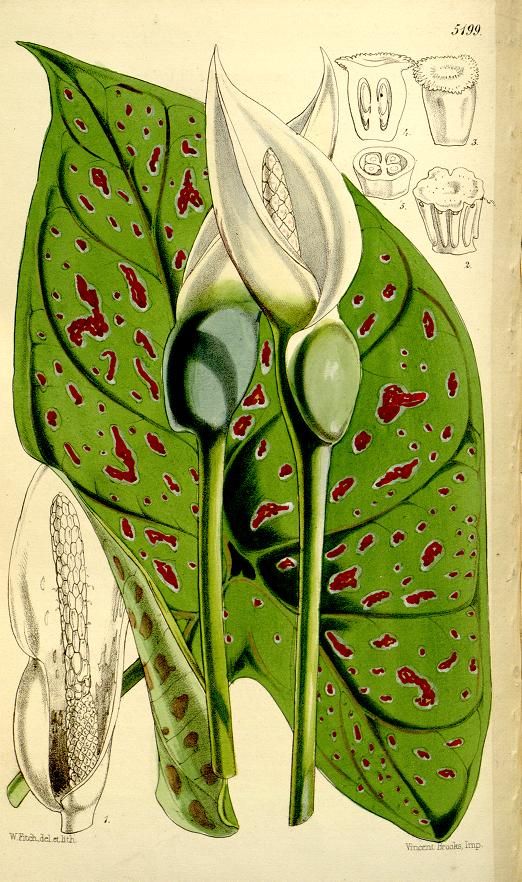
In 1858, Antoine Chantin, a horticulturist in Paris, received from three travelers, the two cousins Baraquin and Mr. Petit, tubers of 8 different caladiums, the list and descriptions of which are as follows:
- C. argyrites. Ch. Lem. 1857. Para. Small, sagittal leaves, with a soft green background, white in the center and on the edges, dotted all over the blade with irregular white spots. Charming little species;
- C. Chantini. Ch. Lem. , 1857 Para. Leaves entirely bright carmine, spotted with white and edged with dark green;
- C. Neumanni. Ch. Lem. , 1857. Para.
- C. Brongniarti. Ch. Lem. , 1857. Para.
- C. argyrospilum. Ch. Lem. , 1857. Para.
- C. Verschaffelti. Ch. Lem. , 1857. Para. Leaves somewhat heart-shaped, dark shiny green irregularly spotted with bright red;
- C. Houlleti. Ch. Lem. , 1857. Para.
- C. thripedestum. Ch. Lem. , 1857. Para.
- C. marmoratum. Ch. Lem. , 1857. Para.
He cultivates them and will be the very first to market Caladium.
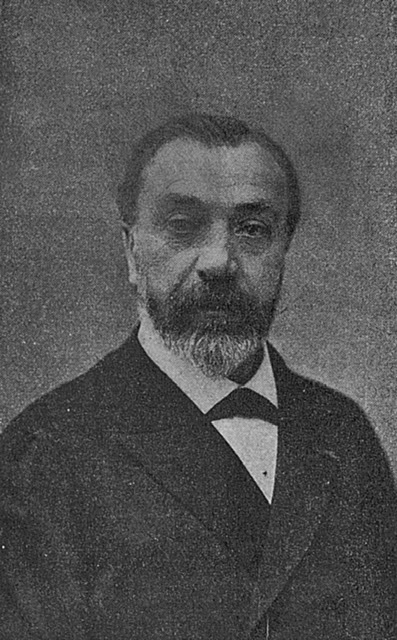
In 1861, Monsieur Bleu (above, portrait) who was then a pharmacist in Paris and an amateur horticulturist, became interested in micrography, and decided to look into the great mystery of plant fertilization. He studies the pollen, seeds and germination.
After very conclusive crossing tests on Rex Begonias, he decided to study the fertilization of Caladium which was considered at that time to be propagated only by division of tubers.
He then began to cultivate Caladiums, he obtained the first seeds and made the first sowings very quickly in September 1862.
At the time he owned the following caladiums:
- C. Brongniarti
- C. Chantini
- C. Argyrospilum
- C. Bicolor
- C. Neumanni
- C. Pœcile
- C. English
- C. Hastatum
- C. Verschaffelti.
- C. Belleymei
- C. Argyrites
- C. Testoni
- C. Baraquini
- C. TroubetsTcoy
- C. Picturatum.
which he hybridized, giving numerous varieties such as:
- C. Duke of Ratibor
- C. Agrippina Dimitri
- C. Meyer
- C. Prince Albert Edward
- C. Leplay
In 1863, he reported his research to the Imperial and Central Horticultural Society, which met to examine Mr. Bleu's hybrids.
But not wanting to reveal the secrets of his process to the commission and being only an amateur, they made the decision not to make a written report on the subject.
In September 1864, during a competition for amateur horticulturists of the Imperial and Central Horticultural Society, Mr. Bleu offered two of his Caladiums, but wanting to give as little information as possible on his hybridization techniques, the jury did not ultimately gave him no prize, only simple thanks. However, Mr. Bleu's caladiums began to interest many horticulturists, he continued with enthusiasm his crosses and he obtained new varieties:
- C. Duke of Ratibor
- C. Agrippina Dimitri
- C. Meyerbeer
- C. Prince Albert Edward
- C. Leplay
He presented them at the Universal Exhibition in Paris in 1867 where he finally achieved real success with the public and professionals, he even won several prizes during the exhibition.
The big fashion for Caladiums was just beginning, the public was impressed by these colorful foliage, as if painted by hand and these transparencies which give them an almost unreal look!
These magnificent Caladiums even inspired the writer Huysmans in his book “À rebours” where he describes Mr. Bleu's collection in his own way.
If we use today's terms we can say that Alfred Bleu then became a real influencer!
Thanks to him and his magnificent hybrids, we are starting to see magnificent Caladiums growing in the greenhouses of horticulture enthusiasts.
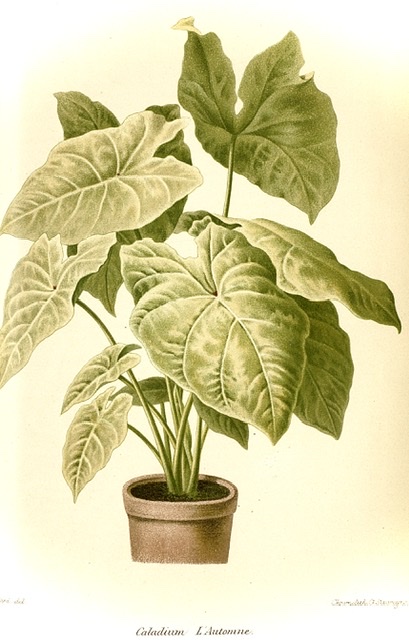
At that time it was considered that the Caladium was only good for decorating greenhouses but in 1881, Mr. Boissard, the gardener of Baroness Alice de Rothschild, a great plant lover, decided to install them as a garden plant. apartment. He then discovered that they behave perfectly and retain their magnificent colors in bright rooms. The Caladium therefore made its grand arrival in our interiors.
At this time, colonial exhibitions were very popular throughout the world and each exhibition was an opportunity to make new plant discoveries for the general public. This is how, in 1893, the Caladium was presented to the public and introduced to the United States by Adolph Leitze, during the Chicago World's Fair. Thus began his great American epic!
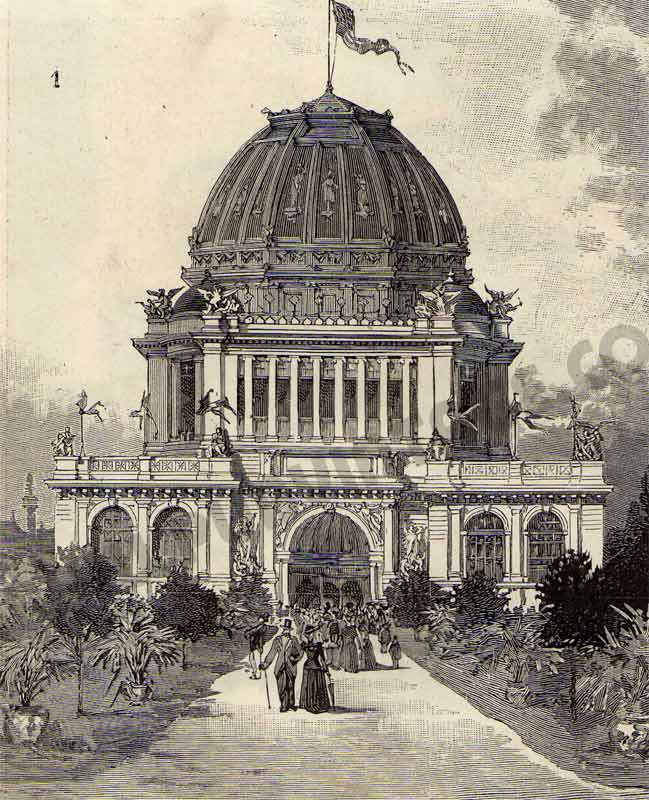
At the beginning of the 1900s, King Rama V, who then reigned over Siam (name of Thailand at the time), undertook several visits to Europe and brought the famous caladium back to his country from his travels.
Caladium will be cultivated secretly for many years for the pleasure of the King and his loved ones in the palace grounds and will slowly end up being shared with a few friends of the royal family.
In 1901, in the full glory of Caladium in France, after 40 years dedicated to this plant, the great Alfred Bleu died and left the world of horticulture in mourning.
A few years later, the First World War ravaged Europe, many gardens and crops were ransacked and the collections gradually dwindled...
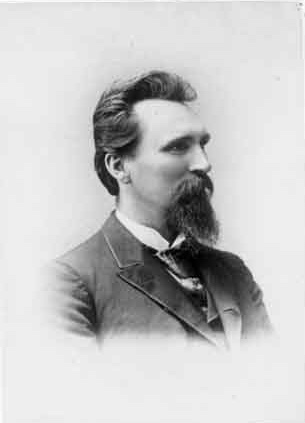
Across the Atlantic, around 1917, Henry Nehrling ornithologist and amateur horticulturist (above, portrait), began to take an interest in the work of Adolph Leitze, he in turn began the hybridization of Caladium and became passionate about the cultivation of this plant which he cultivates in the Florida climate which suits him perfectly.
Théodore Luqueer Mead, an American naturalist and horticulturist, is also interested in Caladium. He collaborates with Henry Nehrling and develops a new variety, smaller in size, with a sagittal leaf called “Lance” more suitable for growing in pots.
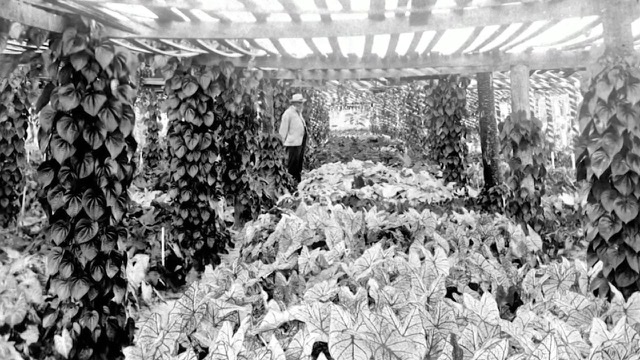
Thanks to them, Caladium is becoming more popular and becoming an essential plant in the United States!
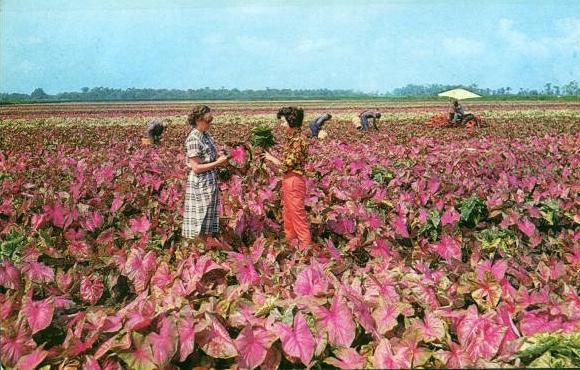
Many Florida horticulturists followed in their footsteps and began cultivating this plant, particularly in the Lake Placid region, which quickly became the world capital of Caladium and which still provides more than 95% of world production today.
In 1976, Caladium was so popular and completely part of the landscape in the Lake Placid region that the University of Florida established its own crops there to study this fabulous plant.
For 25 years, in July, the Caladium Festival has even taken place in Lake Placid and brought together the most beautiful specimens in the United States.
Today, after having been forgotten for a long time by the French, Caladium is making a comeback in France and social networks have nothing to do with it!
If, in America, it has become so accessible and common that it lines window boxes and flower beds by the thousands, here, for decades, the smallest tuber was extremely difficult to find commercially! They either had to be brought in from abroad or exchanged with other collectors.
And that’s how I started my little collection…
Thanks to Instagram, which is now home to a wonderful community of plant lovers, I was able to share some photos of my precious little hard-found caladiums and I had the chance to meet other collectors and be able to acquire other varieties.
By opening my own store in 2017, it was obvious to me that we would offer Caladiums but suppliers were still difficult to find and we could only offer a few Caladiums in extremely limited stocks.
But through research and determination, I managed to organize the very first sale of Caladium tubers in February 2019, with a selection of 12 different varieties:
- C. Miss muffet,
- C. Candidum
- C. Brandy Wine
- C.Aaron
- C. White queen
- C. Red flash
- C.Elise
- C. White christmas
- C. Spring flying
- C. Fannie Munson
- C.Carolyn whorton
- C. Frida Hemple
This sale was a real event for our small community of collectors and from the first day the store was taken by storm!
To believe that he was once again as successful in France as a century before.
We were delighted to be able to share such a wide variety with our customers and to follow, via Instagram, all the stages from purchase to germination and then the flourishing of the plants at home, thanks to this we were able to benefit from a colorful feed from spring to fall!
It was therefore very obvious that after such success, our dear tubers would come forward every winter for a new sale!
Since then, the Parisian store has closed its doors but the desire to continue this lovely sale of tubers is still there, which is why today, I have created an online sales space dedicated solely to this wonderful plant!
I hope you will like this new selection of 36 varieties!


